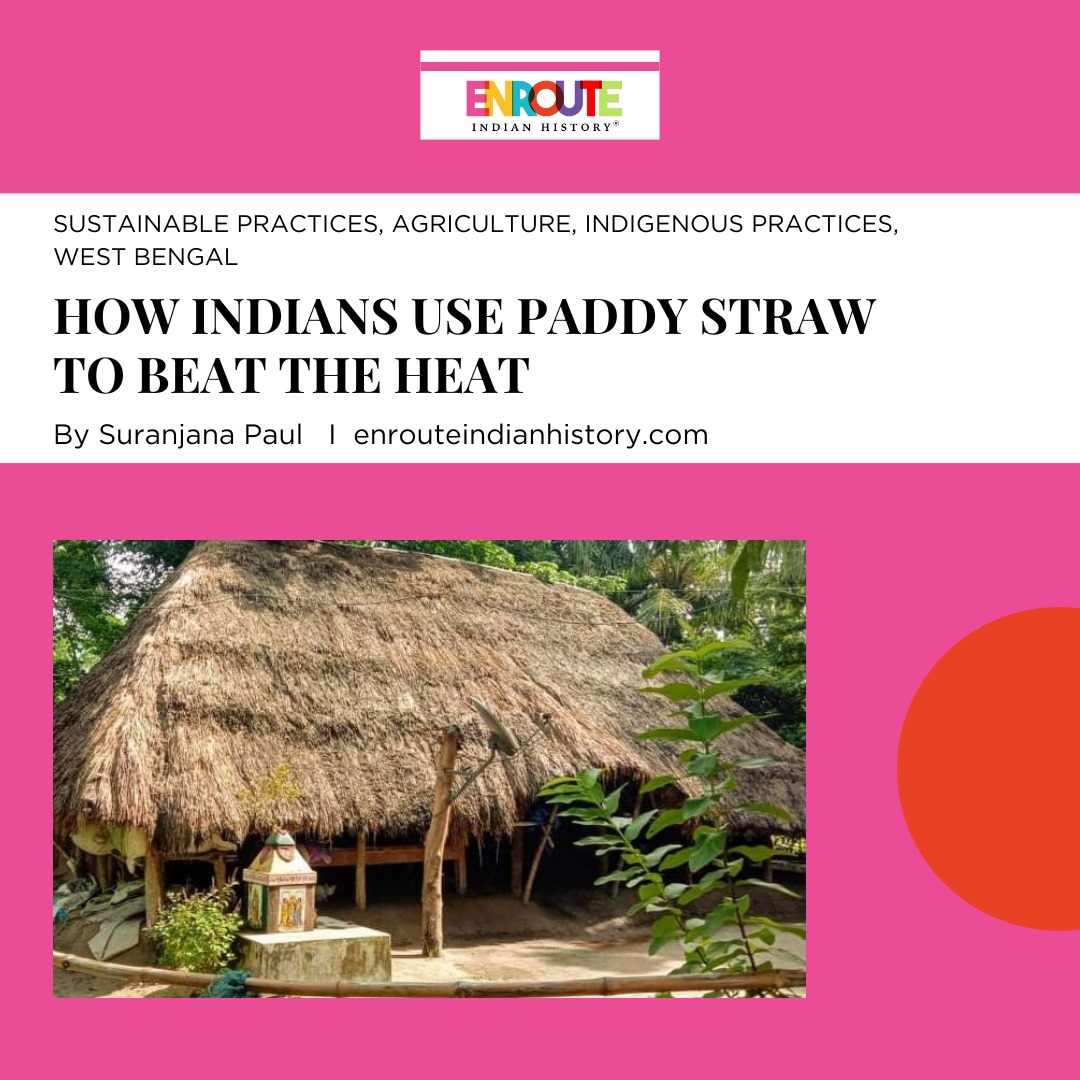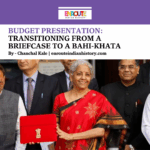
In the age of global warming, organic and natural products are getting popular in the market. Farmers are choosing all those methods that do not create any imbalance in the environment. So farmers, scientists, and researchers are going back to the indigenous practices and they also are developing organic farming, which is slightly different from the indigenous agro-system, but both agricultural practices are sustainable and work as the saviour for nature.
Due to the use of synthetic fertilisers and chemical pesticides in agriculture, the environment was harmed by nitrate leaching into the surface water and groundwater, resulting in soil erosion. Farmers have chosen organic and natural farming as sustainable methods to solve environmental pollution. In both farming, animal wastes are recycled and used as manure and in organic farming the organic wastes from agriculture or poultry are also decomposed and recycled, which makes this farming more sustainable and eco-friendly.
Eco-friendly sustainable practices are not restricted to fertilisers and pesticides. Agricultural waste management is an essential sustainable practice in India. Most people in India are involved in cultivation, and they cultivate different kinds of crops. During farming, different kinds of waste are equally produced, and dumping or burning the waste can create imbalances in the environment.
Sustainable waste management practice in indigenous practices:
Indigenous agricultural practices developed by maintaining a relationship with the environment. To protect Mother Earth, indigenous practices were framed by different cultivation practices, like shifting cultivation, water management, and irrigation systems. These practices improved soil fertility, converted agricultural wastes and animal waste into manures, and reproduced different by-products with the help of agricultural wastes.
For ages, rice straw has been used as agricultural waste in different ways, which will be discussed in this writing.

Paddy Straw
(Source: agribazaar.com)
Straw management practices help to reduce the emission of methane and other greenhouse gases produced during flooded conditions. Burning paddy straws in the open field also negatively affects the environment by polluting the atmosphere and reducing soil quality. Straw management and recycling are the way out to resolve the environmental crisis.

Open-field burning of the paddy straw
(Source: DownToEarth)
Straw management Practices:
Due to its dependency on rice, India produces a good amount of paddy straw, but a quarter of it is burned to clear the field, and the rest is used in different ways.
Fodder for Animals:
This is a popular and age-old practice for waste management, especially for paddy straw. Because straws have some nutrient value, which provides protein and energy to the animal, they are used as primary food resources for the cattle.

Fodder for Cows
(Source: The Hindu Business Line)
Apart from food, straw is also used in winter to keep cattle warm, and straw is also utilized in poultry for different purposes.
Fertiliser Production:
The incorporation of paddy straws has good and bad effects. With good management and maintenance, it can help to enhance the fertility rate of the soil, therefore, it is used to produce manures. Without proper care and management, it can turn into greenhouse gas emissions by the incorporation of paddy straws. For making fertiliser from straws, efficient management is the primary key. In West Bengal, farmers use the mulching process as a management technique, which is effective, but its effect is reflected after a long time. Using straw as mulching materials helps to increase the texture and the structure of the soil as well as the moisture and nutrients of the soil.
Rice granary:
In rural Bengal, rice granaries are a popular storage system known as Dhaner Gola. This granary is made with mud, bamboo, and paddy straws. Farmers can store a large amount of paddy for a long time without any chemicals and preservatives. However, due to cold storage, this traditional form of storage is becoming obsolete daily. Recycling straws as roofs is an indigenous sustainable practice.
Even sometimes in rural areas, it is used to shade the house’s roof. Nowadays, paddy straws are used to make the roofs of cottages in West Bengal.

Rice granary
(Source: The Magic Tours Blog)

Hut
(Source: Kanjik)
Domestic Purpose:
Paddy straws are popular in households, especially in rural areas. They are mainly used as fuel. The scenario might be different today, even in the rural side, but using paddy straw as fuel is a traditional waste management process in West Bengal. Still, it is used as fuel to produce jaggery in winter.

Paddy Straws are used as Fuel
(Source: Ei Samay)
Mushroom Cultivation:
Mushroom production has emerged as a management technique for paddy straw, which is also a sustainable practice. It is an economical approach for West Bengal, apart from the paddy waste management purpose. In mushroom cultivation, paddy straw is used to make the bed for the mushroom by cutting it into pieces, which helps to grow mushrooms.

Mushroom Cultivation
(Source: Bm Mushroom)

Paddy Straw Bed
(Source: Krishi Vigyan Kendra Bhadrak)
Paper Mills:
For paper mills, rice straw is a raw material that can be found easily in India. In terms of waste clearance, farmers give these straws instead of burning the paddy waste. Managing paddy waste by converting it into raw materials for paper is a sustainable way that helps to reduce pollution in nature.
Biogas and Bioenergy:
Paddy straws can be used to produce biogas and bioenergy, which helps to reduce dependence on fossil fuels and Greenhouse gas emissions. Using straws instead of burning them can also produce renewable gases. Bioethanol is a biofuel that can be made from rice straw due to its cellulose content. Producing ethanol from straws also helps to reduce greenhouse gas emissions, which is the main concern of eco-activists.
Handicraft Industry:
Due to the presence of fibrous materials, the paddy straw is utilised in handicraft industries to make different products such as wall hangings, bags, mats, straws, storage boxes, ropes, trays, fancy art pieces, paper and boards which are sustainable as well as environment friendly.
People from the new generation are producing biodegradable packing materials from the straw of paddy, which helps to reduce pollution and is also good for the environment. As a sustainable practice, people have been making packaging boxes and materials from paddy straws for the last few years. In addition to all these products, the material that absorbs the sound in the cinema hall is also produced from paddy straws.
Rice straw is the most available waste in the agricultural sector due to the huge production of paddy in India. Most of the Indians depend on rice and to fulfil the demand many states of India produce paddy in different seasons. Besides the cultivation process, waste management is the most crucial process for the farmers and government. Managing paddy waste without pollution is not possible but, with minimal pollution is possible by moving towards sustainable practices. Going back to natural indigenous farming will help to protect nature but the waste management process, especially paddy straw cannot help them because, as a form of waste disposal, farmers used to burn the straws in the open field which pollutes the environment along with harming the soil. Still, some traditional processes, such as use as fertiliser or fuel in households or use as thatch or fodder for animals are sustainable and eco-friendly ways to manage waste. Nowadays, to reduce the pollution from paddy waste, people have developed different sustainable techniques that help people earn money along with protecting Mother Earth. In the age of global warming, people need to find more sustainable processes to safeguard nature.
REFERENCE:
Sharma, I.P., Kanta, C., Dwivedi, T. and Rani, R., 2020. Indigenous agricultural practices: A supreme key to maintaining biodiversity. Microbiological advancements for higher altitude agro-ecosystems & sustainability, pp.91-112. Available From: Indigenous-Agricultural-Practices-A-Supreme-Key-to-Maintaining-Biodiversity.pdf (researchgate.net). [Accessed 11 May 2024]
Das, S.K. and Mallick, R., 2023. Dept. of Seed Science and Technology, Institute of Agricultural Science, University of Calcutta, West Bengal, India. Chief Editor Dr. Anil Kumar Saxena, 1, p.1. Available From: Clay-Pot-Fridge-Make-in-India-Initiative-for-an-Affordable-On-farm-Storage-of-Perishables.pdf (researchgate.net). [Accessed 11 May 2024]
Allen, Justin & Samoy-Pascual, Kristine & Romasanta, Ryan & Van Trinh, Mai & Thach, Tran & Nguyen, V Hung & Sander, Bjoern Ole & Chivenge, Pauline. (2020). Rice Straw Management Effects on Greenhouse Gas Emissions and Mitigation Options.Sustainable Rice Straw Management (pp.145-159). Available From: DOI:10.1007/978-3-030-32373-8_9. https://www.researchgate.net/publication/337605388_Rice_Straw_Management_Effects_on_Greenhouse_Gas_Emissions_and_Mitigation_Options. [Accessed 11 May 2024]
Chowdhary,S., 2023.DHARAKSHA: Converting rice straw stubble to sustainable packaging material, Financial Express. Available From: https://www.financialexpress.com/business/industry-dharaksha-converting-rice-straw-stubble-to-sustainable-packaging-material-3113193/lite/#amp_tf=From%20%251%24s&aoh=17155448562263&csi=1&referrer=https%3A%2F%2Fwww.google.com. [Accessed 11 May 2024]
Roy, P., Bhattacharyya, S., Kaur, M., Sharma, K.M., Barman, M., Choudhury, A.G. and Bhowmick, P., Comprehensive Scenario Analysis of Straw Management in Punjab and West Bengal. Available From: Ch. 12 (researchgate.net). [Accessed 11 May 2024]
Singh, A. and Basak, P., 2019. Economic and environmental evaluation of rice straw processing technologies for energy generation: A case study of Punjab, India. Journal of cleaner production, 212, pp.343-352. Available From: DOI: https://doi.org/10.1016/j.jclepro.2018.12.033. [Accessed 11 May 2024]



















